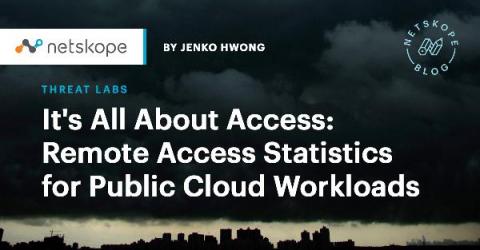It's All About Access: Remote Access Statistics for Public Cloud Workloads
“The more things change, the more they stay the same.“ In the recent Equinix breach in September 2020, 74 RDP servers were exposed to the Internet. Any publicly exposed ports are a risk but remote access protocols such as RDP have had their share of critical vulnerabilities (e.g., BlueKeep in 2019).








